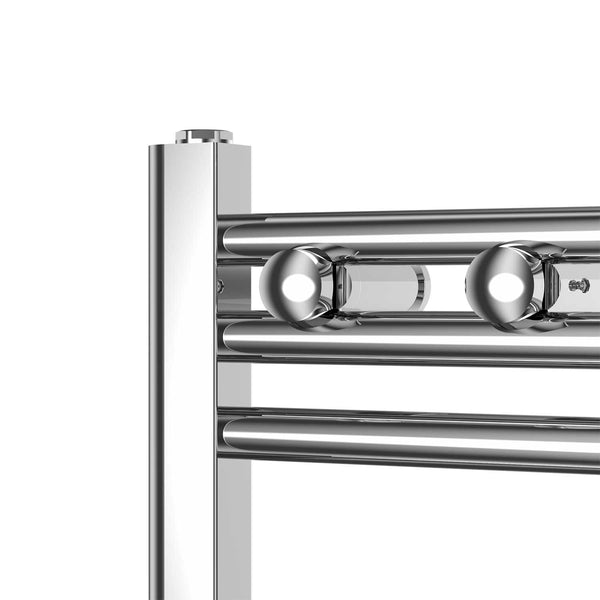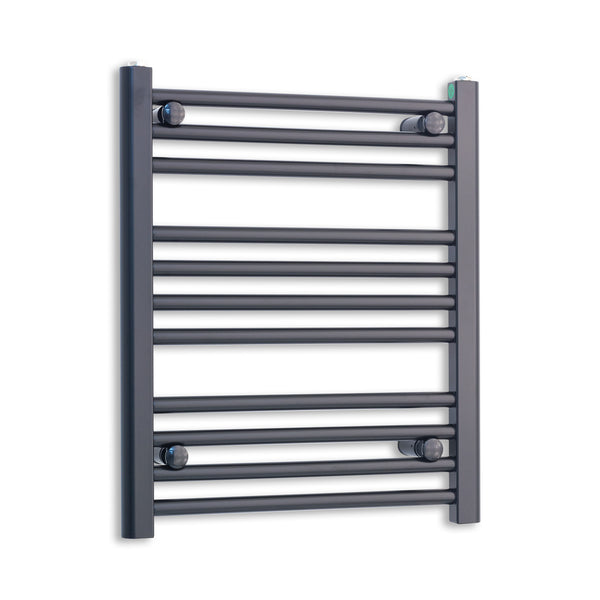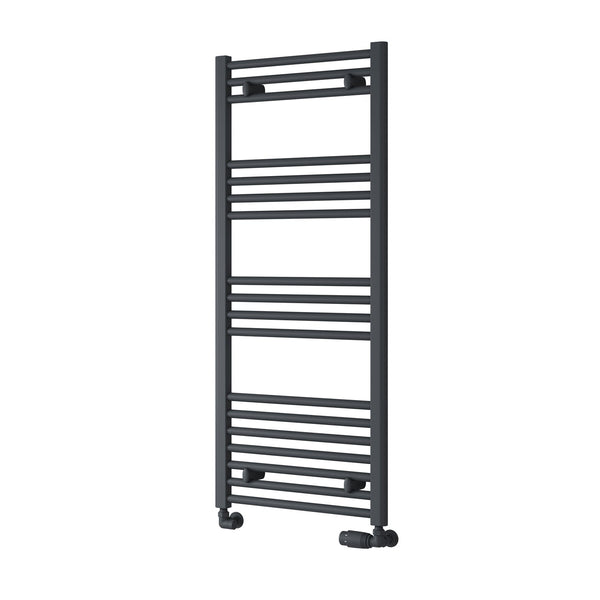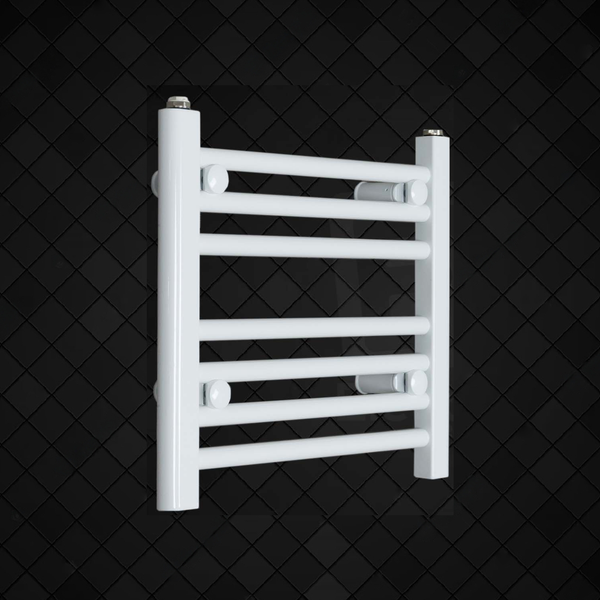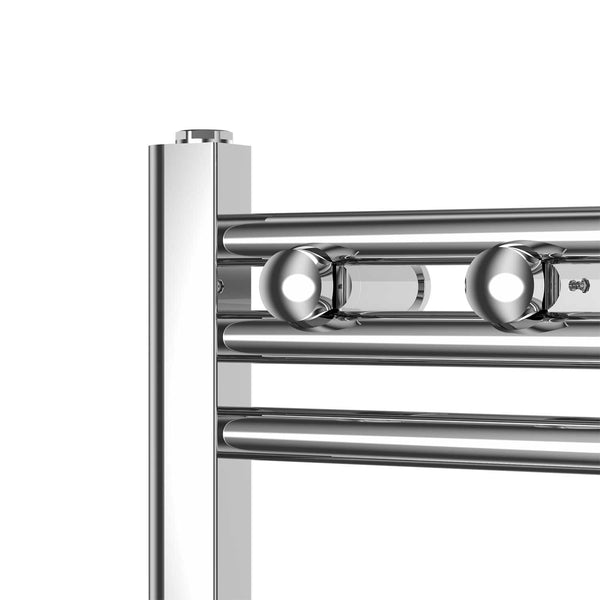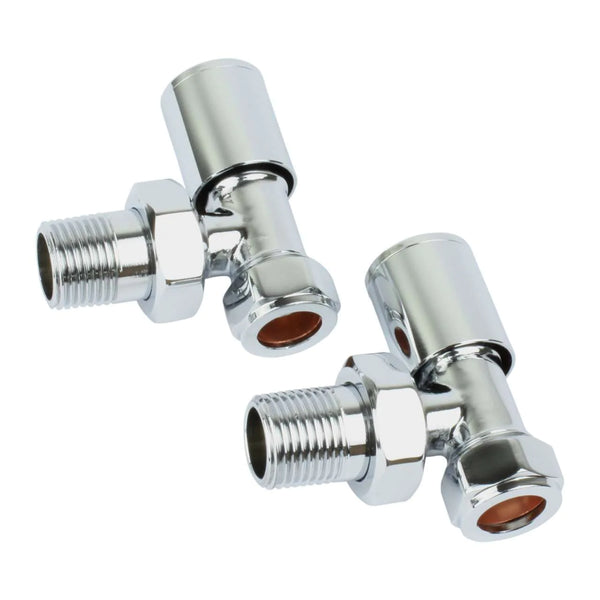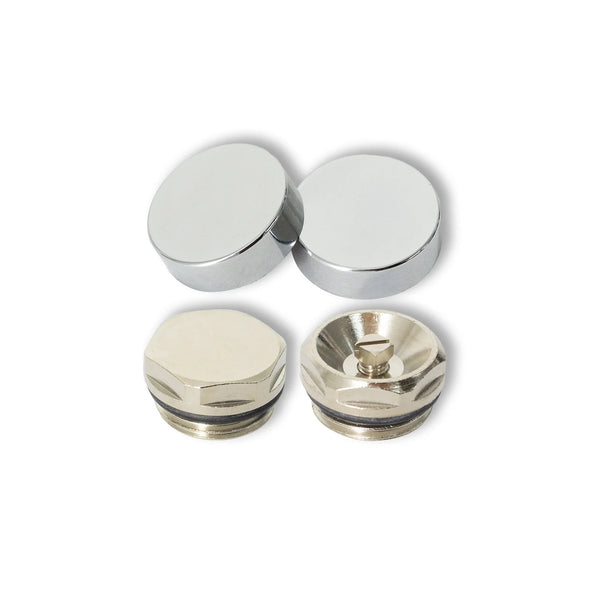Electric Towel Rail Running Costs in the UK – 2025

With energy prices on the rise, it’s important to know how much it costs to run your electric towel rail or heating element. In this updated 2025 guide, we’ll show you how to calculate running costs per hour using the latest UK electricity rates. We’ll use example wattages (e.g. 1000W, 1500W, 900W, 600W, etc.) from a previous guide and recalculate their costs with the May 2025 electricity price. You’ll learn the simple formula for estimating costs, see a comparison of example wattage costs, and understand the difference between thermostatic vs standard heating elements. By the end, you’ll be able to estimate how much your heated towel rail adds to your energy bill and how to optimise its use. See all heated electric elements.
How to Calculate Electric Towel Rail Running Costs
Calculating the running cost of an electric towel radiator (or any electrical appliance) is straightforward. Use this simple formula:
Running Cost = (Watts ÷ 1000) × Hours of use × Electricity rate (per kWh)
This formula converts the appliance’s power from watts to kilowatts, then multiplies by the hours it’s used and the cost per kilowatt-hour (kWh) of electricity. The wattage (power rating) of your towel rail’s heating element can usually be found on the unit’s nameplate or in its manual. It’s important to use the element’s wattage (electrical input), not the towel rail’s heat output in BTU, for accurate cost calculations.
-
Example Calculation: Suppose you have a 1000W (1 kW) electric towel rail. If you run it for 1 hour, and electricity costs about £0.27 per kWh (27 pence per kWh), the cost is:
(1000 W ÷ 1000) × 1 hour × £0.27 = £0.27 per hour (approximately 27p per hour).
You can scale this up for longer usage periods. For instance, 2 hours of use would cost about £0.54 (54p), and so on. To estimate daily or monthly costs, multiply the hourly cost by the number of hours used per day and the number of days. Keep in mind that actual energy usage can depend on factors like how well your room is insulated and whether the heater runs continuously or cycles on/off to maintain temperature. A well-insulated bathroom or a thermostat can reduce how often the element needs to draw full power, saving you money.
Electricity Price in the UK (May 2025)
Electricity prices in the UK have increased in recent years. As of May 2025, the average unit electricity rate for households is around 27 pence per kWh (this includes 5% VAT). This figure comes from Ofgem’s energy price cap for April–June 2025, which limits the rate suppliers can charge on standard tariffs. For context, a few years ago (around 2016), the price per kWh was about 12.6p in the UK Midlands on a standard tariff – meaning today’s rate of ~27p is more than double the old rate. Such increases significantly affect the running cost of electric heating appliances, so updating calculations with the current rate is crucial.
(Note: 27p/kWh is an average under the price cap for a typical customer paying by Direct Debit . Your exact unit rate may vary slightly depending on your region and energy supplier, but we will use 27p as a representative current figure.)
Example Running Costs by Wattage
Using the latest electricity price (~27 pence per kWh), here are example running costs per hour for various common wattages of electric towel rails or heater elements. This shows how much each appliance would cost if it runs at full power for one hour:
-
700W appliance: ~£0.19 per hour (19p/hour).
-
900W appliance: ~£0.24 per hour (24p/hour).
-
1000W (1 kW): ~£0.27 per hour (27p/hour).
-
1250W appliance: ~£0.34 per hour (34p/hour).
-
1500W (1.5 kW): ~£0.41 per hour (41p/hour).
-
1800W appliance: ~£0.49 per hour (49p/hour).
Each value above is calculated by (wattage ÷ 1000) × £0.27. For example, the 1500W heater uses 1.5 kWh in an hour, which costs about 1.5 × £0.27 = £0.405 (approximately 41p). These costs are per hour of usage at full power. If you only switch on the towel rail for 30 minutes, it would be roughly half the cost. Likewise, running it continuously for several hours would multiply the cost accordingly.
Thermostatic vs Standard Heating Elements
When it comes to electric towel rails, you’ll often see two types of heating elements: thermostatic and standard (non-thermostatic). The difference can affect how your towel rail operates and how much electricity it uses over time:
-
Thermostatic Heating Elements: These elements include a built-in thermostat (or temperature control). You set a desired temperature, and the element will cycle on and off to maintain that heat. This means the heater won’t draw full power continuously – it turns off once the towel rail is hot enough, then back on when it cools. In practice, a thermostatic towel rail may only run at full wattage part of the time, which can reduce the average hourly cost. (For example, a 600W thermostatic rail might cycle on only 50% of the hour once up to temperature, using ~0.3 kWh instead of 0.6 kWh per hour on average.) This can lead to energy savings. However, to compare on an equal basis, the maximum hourly cost when the element is actively heating is the same formula as before.
-
Standard (Non-Thermostatic) Elements: These have no built-in thermostat control. When switched on, a standard element will continuously draw its full rated power until you turn it off or use an external timer. The rail will heat up, but the element doesn’t shut off automatically when a certain temperature is reached. This makes the calculation of running cost straightforward – if it’s on for an hour, it uses the full kW rating for the whole hour. A standard element may be simpler and slightly cheaper to purchase, but it gives you less control over energy usage aside from turning it on or off manually (or via a wall switch/timer).
Running Cost Examples – Thermostatic Elements
Even with a thermostat, you can calculate the per-hour cost when the heater is actively heating. Here are updated cost examples for typical thermostatic element wattages, assuming one hour of continuous heating at the current rate (~27p/kWh):
-
300W Thermostatic element: ~£0.08 per hour (8p/hour).
-
600W Thermostatic element: ~£0.16 per hour (16p/hour).
-
900W Thermostatic element: ~£0.24 per hour (24p/hour).
These figures represent the cost if the element was heating for a full hour. In reality, the thermostat might shut the element off partway through the hour once the set temperature is reached, so the actual cost per hour with the thermostat regulating could be lower. For instance, at 600W you might only consume half of that power on average with a good thermostat, effectively ~8p per hour over a long period. The above costs are the upper bound per hour for those wattages.
Frequently Asked Questions (FAQ)
1. Is it cheaper to leave an electric towel rail on all the time?
Not usually. Leaving it on 24/7 can increase your electricity bill significantly, especially if it’s a standard (non-thermostatic) model. Using a timer or thermostat is more efficient, as it limits energy use to when it’s actually needed.
2. How much are heated towel rails to run?
It depends on the wattage and how long they’re used. For example, a 600W towel rail costs about 16p per hour to run at current UK rates (May 2025, £0.27/kWh). Thermostatic models may cost less over time as they cycle on and off.
3. Should electric heated towel rails be left on?
Only if they have a thermostat or timer. Leaving them on constantly without control may overheat your bathroom and waste energy. For daily use, a programmable timer is ideal.
4. Do thermostatic towel rails save electricity?
Yes. Thermostatic models automatically switch off when the desired temperature is reached, reducing overall power consumption and running costs compared to standard elements.
5. Can I use a smart plug or timer with my towel rail?
Yes, most electric towel rails can be paired with a smart plug or wall timer. This allows you to set schedules, reducing unnecessary energy use and improving safety.
6. How much does a 900W towel rail cost to run per hour?
At £0.27 per kWh (May 2025), a 900W rail costs around 24p per hour to run. If thermostatically controlled, actual usage may be lower due to cycling.
7. Is it safe to leave a towel rail on overnight?
If it’s thermostatically controlled and properly installed, it’s generally safe. However, for safety and cost reasons, using a timer to switch it off overnight is recommended.
8. Do heated towel rails use a lot of electricity?
Compared to larger heating appliances, they use less electricity, especially models under 600W. However, long usage without a timer or thermostat can still add up over time.
